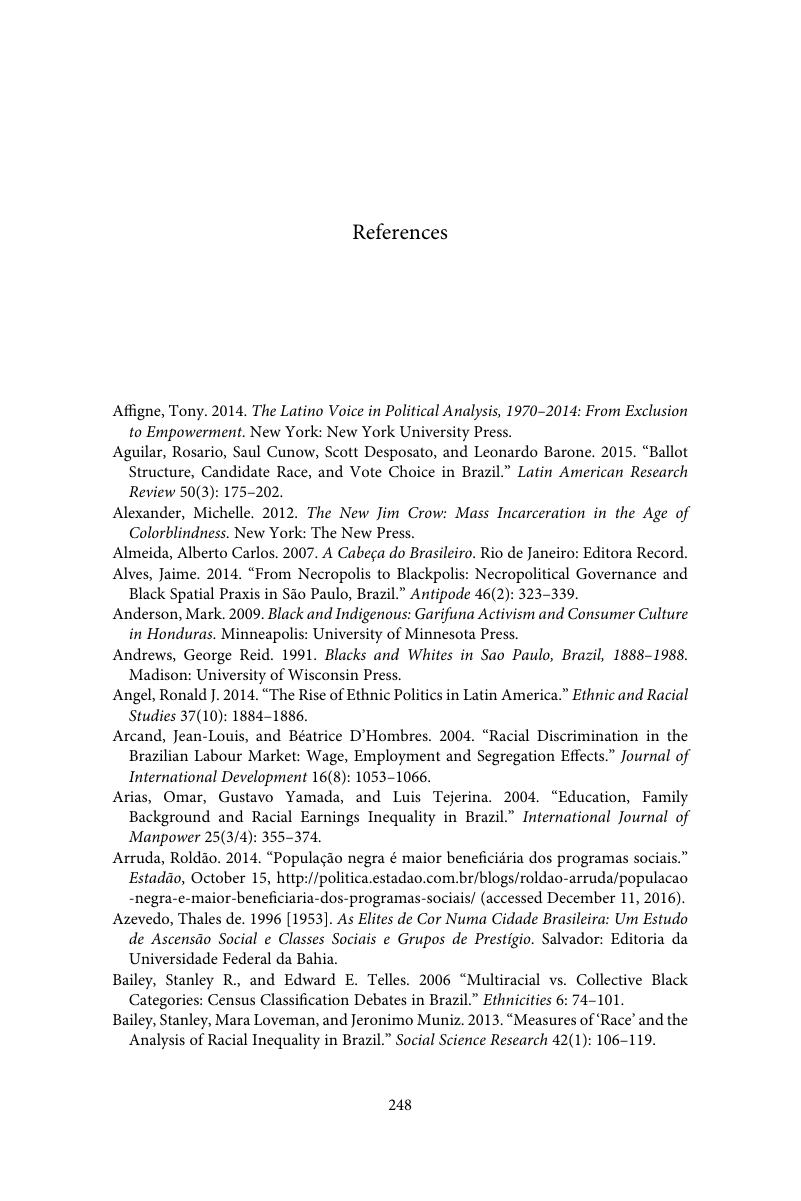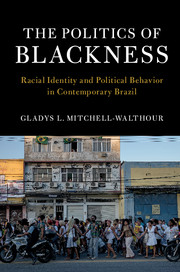Book contents
- The Politics of Blackness
- Cambridge Studies in Stratification Economics: Economics and Social Identity
- The Politics of Blackness
- Copyright page
- Dedication
- Contents
- Figures
- Tables
- Maps
- Acknowledgments
- Introduction
- 1 Afro-Brazilian Political Underrepresentation
- 2 Blackness and Racial Identification in Contemporary Brazil
- 3 Negro Group Attachment in Brazil
- 4 Negro Linked Fate and Racial Policies
- 5 Afro-Descendants Perceptions of Discrimination and Support forAffirmative Action
- Conclusion The Racialization of Political Events
- Appendix 2005–2006 Survey of Political Opinion, Racial Attitudes and Candidate Preference (in Portuguese)
- References
- Index
- References
References
Published online by Cambridge University Press: 24 November 2017
- The Politics of Blackness
- Cambridge Studies in Stratification Economics: Economics and Social Identity
- The Politics of Blackness
- Copyright page
- Dedication
- Contents
- Figures
- Tables
- Maps
- Acknowledgments
- Introduction
- 1 Afro-Brazilian Political Underrepresentation
- 2 Blackness and Racial Identification in Contemporary Brazil
- 3 Negro Group Attachment in Brazil
- 4 Negro Linked Fate and Racial Policies
- 5 Afro-Descendants Perceptions of Discrimination and Support forAffirmative Action
- Conclusion The Racialization of Political Events
- Appendix 2005–2006 Survey of Political Opinion, Racial Attitudes and Candidate Preference (in Portuguese)
- References
- Index
- References
Summary

- Type
- Chapter
- Information
- The Politics of BlacknessRacial Identity and Political Behavior in Contemporary Brazil, pp. 248 - 262Publisher: Cambridge University PressPrint publication year: 2017



